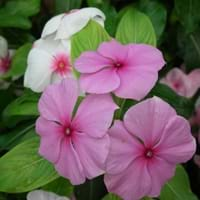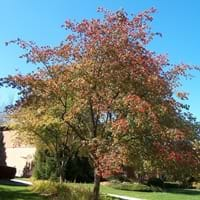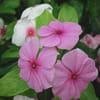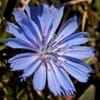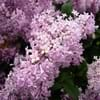Life Span
Perennial
Annual
Type
Flowering Plants, Shrubs
Tree
Origin
Madagascar
North America, United States, Mid-Atlantic United States, Southeastern United States
Types
Purple vinca, Vinca, cherry red, strawberry color
Tree
Number of Varieties
Not Available
Habitat
Subtropical climates, Tropical regions
Banks, Woods
USDA Hardiness Zone
4-9
4-8
Sunset Zone
A1, A2, A3, H1, H2, 1a, 1b, 2a, 2b, 3a, 3b, 4, 5, 6, 7, 8, 9, 10, 11, 12, 13, 14, 15, 16, 17, 18, 19, 20, 21, 22, 23, 24
2a, 2b, 3a, 3b, 4, 5, 6, 7, 8, 9, 10, 11, 12, 14, 15, 16, 17
Habit
Clump-Forming
Oval or Rounded
Flower Color
Magenta, Pink, Rose
White
Flower Color Modifier
Not Available
Bicolor
Fruit Color
Not Available
Red
Leaf Color in Spring
Dark Green
Green, Purple
Leaf Color in Summer
Dark Green
Green, Dark Green
Leaf Color in Fall
Dark Green
Red, Orange
Leaf Color in Winter
Dark Green
Not Available
Leaf Shape
Oval
Broadly Ovate
Plant Season
Fall, Spring, Summer, Winter
Spring, Summer, Fall, Winter
Sunlight
Partial shade
Full Sun
Type of Soil
Loamy, Sandy, Well drained
Clay, Loam, Sand
The pH of Soil
Neutral, Slightly Alkaline
Acidic, Neutral
Soil Drainage
Well drained
Well drained
Bloom Time
Fall, Spring, Summer
Late Spring, Early Summer
Tolerances
Drought, Pollution, Salt
Not Available
Where to Plant?
Container, Ground, Pot
Ground
How to Plant?
Seedlings, Stem Planting, Transplanting
Seedlings
Plant Maintenance
Medium
Medium
Watering Requirements
Does not require lot of watering, Medium
Average Water Needs, Do Not over Water
In Summer
Lots of watering
Lots of watering
In Spring
Moderate
Moderate
In Winter
Average Water
Average Water
Soil pH
Neutral, Slightly Alkaline
Acidic, Neutral
Soil Type
Loamy, Sandy, Well drained
Clay, Loam, Sand
Soil Drainage Capacity
Well drained
Well drained
Sun Exposure
Partial shade
Full Sun
Pruning
Prune ocassionally
Remove damaged leaves, Remove dead branches, Remove dead leaves
Fertilizers
All-Purpose Liquid Fertilizer
All-Purpose Liquid Fertilizer
Pests and Diseases
Botrytis Blight, Canker, Crown rot, Pythium rot, Root rot
Red blotch
Plant Tolerance
Drought
Drought
Flower Petal Number
Single
Single
Foliage Texture
Medium
Medium
Foliage Sheen
Glossy
Glossy
Attracts
Butterflies
Birds
Allergy
Intestinal gas, Nausea, Vomiting
Not Available
Aesthetic Uses
Beautification, Showy Purposes
Landscape Designing, Showy Purposes
Beauty Benefits
Not Available
Not Available
Environmental Uses
Air purification
Air purification
Medicinal Uses
Chest pain, High blood pressure, Inflammation, Sore throat, Tooth ache, Wounds
Heart problems
Part of Plant Used
Whole plant
Flowers, Leaves
Other Uses
Decoration Purposes, Showy Purposes, Used as Ornamental plant
Culinary use, Used As Food, Used for its medicinal properties
Used As Indoor Plant
Yes
No
Used As Outdoor Plant
Yes
Yes
Garden Design
Bedding Plant, Container, Edging
Feature Plant, Hedges, Screening / Wind Break, Shade Trees, Street Trees
Botanical Name
Catharanthus roseus
CRATAEGUS phaenopyrum
Common Name
Madagascar periwinkle or rosy periwinkle
Washington Hawthorn
In Hindi
Periwinkle
Washington Hawthorn
In German
Immergrün
Washington Hagedorn
In French
Pervenche
washington aubépine
In Spanish
Bígaro
espino Washington
In Greek
μυρτιά
washington hawthorn
In Portuguese
Mirta
washington espinheiro
In Polish
Barwinek
Washington głogu
In Latin
Periwinkle
Washington alba
Phylum
Mollusca
Magnoliophyta
Class
Gastropoda
Magnoliopsida
Family
Apocynaceae
Rosaceae
Genus
Catharanthus
Crataegus
Clade
Not Available
Angiosperms, Eudicots, Rosids
Tribe
Not Available
Not Available
Subfamily
Not Available
Not Available
Number of Species
Not Available
Season and Care of Periwinkle and Washington Hawthorn
Season and care of Periwinkle and Washington Hawthorn is important to know. While considering everything about Periwinkle and Washington Hawthorn Care, growing season is an essential factor. Periwinkle season is Fall, Spring, Summer and Winter and Washington Hawthorn season is Fall, Spring, Summer and Winter. The type of soil for Periwinkle is Loamy, Sandy, Well drained and for Washington Hawthorn is Clay, Loam, Sand while the PH of soil for Periwinkle is Neutral, Slightly Alkaline and for Washington Hawthorn is Acidic, Neutral.
Periwinkle and Washington Hawthorn Physical Information
Periwinkle and Washington Hawthorn physical information is very important for comparison. Periwinkle height is 1.97 cm and width 2.96 cm whereas Washington Hawthorn height is 610.00 cm and width 610.00 cm. The color specification of Periwinkle and Washington Hawthorn are as follows:
Periwinkle flower color: Magenta, Pink and Rose
Periwinkle leaf color: Dark Green
Washington Hawthorn flower color: White
- Washington Hawthorn leaf color: Green and Purple
Care of Periwinkle and Washington Hawthorn
Care of Periwinkle and Washington Hawthorn include pruning, fertilizers, watering etc. Periwinkle pruning is done Prune ocassionally and Washington Hawthorn pruning is done Remove damaged leaves, Remove dead branches and Remove dead leaves. In summer Periwinkle needs Lots of watering and in winter, it needs Average Water. Whereas, in summer Washington Hawthorn needs Lots of watering and in winter, it needs Average Water.
